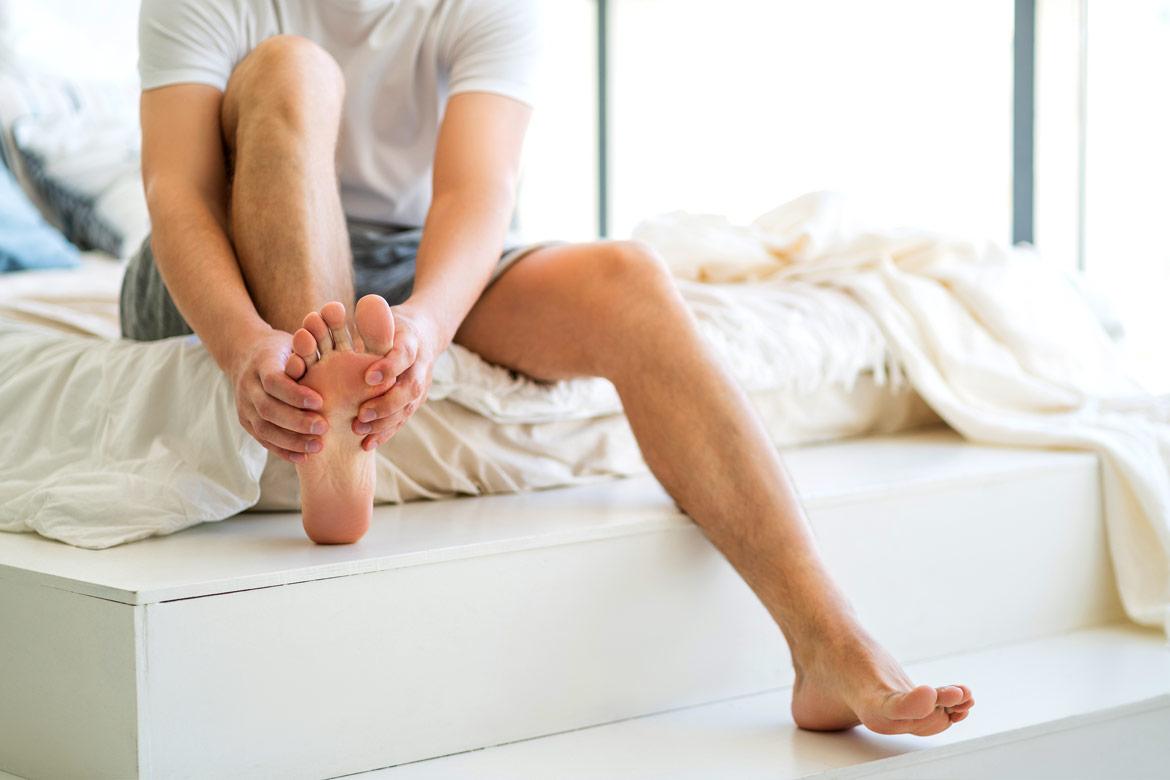-
-
Featured Care Areas

Neck Pain
What is neck pain?
Neck pain is a common problem that affects many adults. Poor posture from prolonged use of computers and hand phones is an increasingly common cause of neck pain. As we age, we will also experience degenerative (wear and tear) changes in our cervical spine.
The vertebrae (bones) in the spine are separated by cervical discs, which act as shock absorbers. Over time, the discs between the bones wear out. They can collapse, be displaced from their normal position and become stiffer.
Types of neck pain
Neck pain comes in various forms and can be categorised into the following:
Axial neck pain (mechanical pain)
Axial neck pain:
- Is the most common type of neck pain
- Is usually caused by neck muscle strains or ligament sprains
- Can also be associated with spinal degeneration or trauma
Radicular pain (cervical radiculopathy or pinched nerve)
Radicular pain:
- Occurs when an inflamed nerve root in the cervical spine causes pain to radiate along the nerve, extending to the shoulder, arm or hand.
- Is usually caused by spinal degeneration (wear and tear), such as when a nerve root is irritated by bone spurs, or a cervical herniated disc.
- Can also be caused by a sudden injury that results in a herniated disc.
Referred pain
Referred pain:
- Is experienced in a separate location from its source. The source of pain can be from an unrelated part of the body because of nerve network interconnectivity.
- Is not well understood as to what triggers it and how it develops and spreads.
- Can sometimes be traced back to sources such the heart (during a heart attack) or jaw (temporomandibular joint (TMJ)).
Myelopathic pain (cervical myelopathy)
Myelopathic pain:
- Occurs when the spinal cord in the neck is compressed.
- Can be easily misdiagnosed because early symptoms of progressive spinal cord compression are vague and not specific. Unless suspected and an MRI is done, this condition is often missed until an advanced stage.
- Can also occur when the spinal cord’s ascending tracts, which carry sensory information such as pain and touch, become compressed or irritated (funicular pain).
Acute versus chronic neck pain
Neck pain can also be categorised by the duration and cause of pain into:
- Acute pain usually does not last beyond 4 weeks, and typically originates from some form of trauma or acute injury, such as a neck strain or sports injury. Inflammation can also cause acute pain, and it often subsides when rested.
- Chronic pain starts gradually and can last more than 3 months. The underlying cause may or may not be identifiable.
What are the symptoms of neck pain?
Symptoms of neck pain can vary depending on the type of pain you have.
Axial neck pain (mechanical pain)
Symptoms of axial neck pain include:
- Concentrated mainly on one area of the neck and does not move or radiate
- Pain that feels dull, achy, or throbbing, but can also be sharp or stinging
- Certain movements or poor posture can aggravate symptoms
Radicular pain (cervical radiculopathy)
Symptoms of radicular pain, commonly known as pinched nerve, include:
- Pain that feels like an electric shock and may intensify when you move or adopt a specific posture
- Tingling or the feeling of "pins and needles" in the fingers or hand
- Weakness in the muscles of the arm, shoulder, or hand
- Loss of sensation
- Can be experienced on only one side of the body, but also possible on both
Referred pain
Symptoms of referred pain include:
- Feels deep, achy, cramp-like or may have a throbbing sensation
- May feel similar to radicular pain but is more diffused, or spread out
- Usually experienced on only one side of the body, but it can be on both
Myelopathic pain (cervical myelopathy)
Symptoms of myelopathic pain include:
- Stiffness and reduced range of motion in the neck
- Shooting pain that originates in the neck and travels down the spine
- Weakness and tingling in the arms and hands
- Can affect fine motor skills, balance and coordination, such as writing, playing musical instruments, using chopsticks and buttoning shirts
What causes neck pain?
The causes of neck pain include:
- Muscle strain. Poor or awkward posture (such as cradling your phone between your shoulder and neck), being overweight, or having weak abdominal muscles can strain neck muscles.
- Joint degeneration. Neck joints suffer wear and tear with age. There are also conditions that affect the spine, such as cervical spondylosis, which causes the cushions (cartilage) between the vertebrae to wear out.
- Pressure on the nerves. Pressure from herniated discs or bone spurs in the vertebrae of your neck can affect the nerves in the spinal cord.
- Sudden severe injuries caused by accidents or falls. Whiplash is an injury to the soft tissues of the neck caused by the sudden jerking of the head. It is commonly caused by car accidents involving a rear-end collision.
- Diseases. Neck pain can be caused by specific conditions such as rheumatoid arthritis and ankylosing spondylitis. It can also be caused by diseases such as cancer and meningitis.
How do you prevent neck pain?
As most neck pain is associated with poor posture combined with age-related wear and tear, you can help to prevent it by making some lifestyle changes.
You can make simple changes to your daily routine, such as:
- Avoiding strained, awkward postures, such as holding the phone between your ear and shoulder when you talk.
- Not carrying heavy bags over your shoulder. Excessive weight can strain your neck.
- Maintaining good posture. Stand or sit upright. Make sure your shoulders are in a straight line above your hips, and your ears are aligned with your shoulders.
- Maintaining a good sleeping position. Align your head and neck with your body when you sleep. Use sleeping aids like a small pillow placed under your neck.
- Quitting smoking. Smoking is associated with higher risks of neck pain.
- Repositioning your desk, chair and computer. Ensure that your monitor is at eye level. When sitting, use the chair's armrests and make sure your knees are slightly lower than your hips.
- Taking frequent breaks. Do get up, move around and stretch if you need to sit for long hours at your computer or when travelling. Aim for a 5-minute break every 45 minutes.
This coverage checker is brought to you by Health Insured, an online resource that helps you understand your health coverage in Singapore.
This page has been reviewed by our medical content reviewers.
Need help?
For enquiries, please call
+65 6377 3737
For appointment bookings, please WhatsApp
+65 8111 3777








